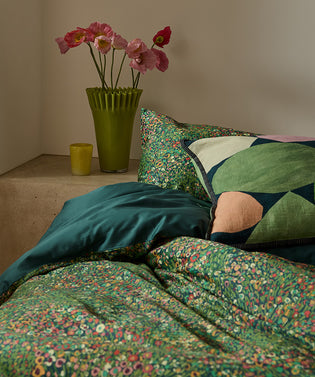
What Does Thread Count Mean? The Complete Guide to Understanding Bed Sheet Quality
When shopping for bed linen, thread count is one of the most commonly referenced indicators of quality — but it is also one of the most misunderstood. Many brands inflate numbers, use misleading definitions, or rely on outdated claims. At KAS Australia, we believe in transparency and education so you can make confident choices when selecting your bedding. This guide explains what thread count really means in Australia and internationally, how it is calculated, and why it matters (and sometimes doesn’t).
What Is Thread Count?
Thread count refers to the total number of threads woven together in a 10 cm section of fabric. These threads include:
-
Warp threads — running vertically
-
Weft threads — running horizontally
Thread count provides insight into the density and feel of the fabric. While a higher thread count can indicate a smoother and softer sheet, it’s only one piece of the overall quality picture.
Thread Count = Warp Threads per 10 cm + Weft Threads per 10 cm
Understanding the Weave: Warp vs. Weft
Fabric weaving relies on two perpendicular sets of yarns:
Warp Threads (The Backbone of the Fabric)
-
Run vertically (up and down the length of the fabric)
-
Are typically stronger because they experience greater tension during weaving
Weft Threads (The Supporting Structure)
-
Run horizontally (side to side)
-
Interlace over and under the warp threads to form the weave
Together, these threads create the structure, weight, and feel of the finished fabric.
Does Higher Thread Count Always Mean Better Sheets?
Not necessarily. While increasing the number of threads can improve softness and smoothness, quality ultimately depends on both thread count and yarn quality.
✔ High-Quality Sheets Use:
-
Long-staple or extra-long-staple cotton
-
Fine, high-strength yarns
-
Authentic single-ply construction
-
Precision weaving techniques
❌ Thread Count Alone Can Mislead
Some manufacturers artificially inflate thread count by:
-
Counting plies rather than actual threads
-
Using double- or triple-ply yarns
-
Using packed or twisted yarn constructions
The Reality
A well-woven 300–500 thread count sheet made from quality cotton is often softer, stronger and longer-lasting than a “1,000+ thread count” sheet produced using gimmicky yarn construction.
Why We Use Fine Yarns in Our Bedding
At KAS Australia, we focus on using premium yarns because:
-
Finer yarns allow more threads to fit naturally within the 10 cm measurement
-
They produce a smoother, silkier-touch fabric
-
They enhance breathability and temperature regulation
-
They maintain durability without relying on artificial thread inflation
The result is a balanced sheet that feels luxurious while performing perfectly across seasons.
Thread Count & Fabric Types: How They Compare
Different weaves and fibres naturally accommodate different thread ranges:
Percale Weave
-
Crisp, matte finish
-
Naturally lower thread count (typically 200–400)
-
Breathable and ideal for warm sleepers
Sateen Weave
-
Smooth, silky feel with gentle sheen
-
Naturally higher thread count (typically 300–600)
-
Warmer and more enveloping
Linen
-
Uses thicker yarns
-
Not typically measured in thread count
-
Prioritises breathability and natural texture
Bamboo / Tencel
-
Soft, fluid drape
-
Often measured differently due to fibre composition
Understanding the fibre and weave construction is just as important as understanding thread count.
Our Commitment to Honest Thread Count Labelling
We are committed to providing accurate, industry-standard textile information. When you see a thread count on a KAS Australia product, it reflects authentic weaving practices — no inflated numbers, no marketing tricks, and no confusion.
Thread Count = Warp Threads + Weft Threads (per 10 cm)
This ensures our customers receive the level of comfort, luxury, and durability they expect.

Shop our range of sheet sets today

